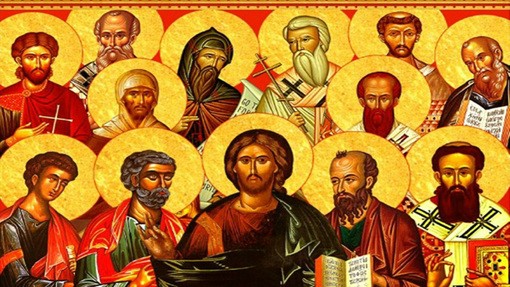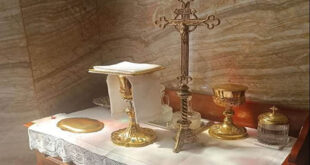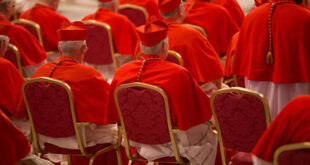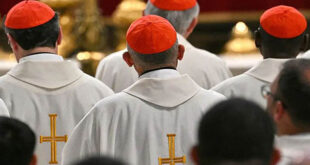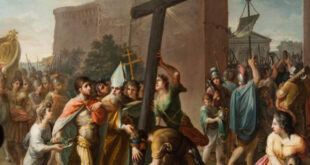The question of whether the Catholic Church is “biblical” often arises in conversations among believers from different Christian denominations, especially in the context of ecumenical dialogue. For many, the Bible is the primary source of Christian faith, but the Catholic Church also gives central importance to Tradition as a complementary source of Revelation. This article aims to shed light on how the Church understands the relationship between the Bible and Tradition, offering a historical, theological, and spiritual overview that allows everyone to appreciate the richness of the Catholic faith.
The Bible and Tradition: Two Sources of Revelation
1. What does the Church say about the Bible?
The Catholic Church recognizes Sacred Scripture as the written Word of God. In the Second Vatican Council, the Dogmatic Constitution Dei Verbum reaffirmed that “everything asserted by the inspired authors or sacred writers must be held to be asserted by the Holy Spirit” (DV 11). The Bible is indeed at the heart of Catholic teaching. However, the Church also teaches that the Bible cannot be interpreted apart from Tradition and the Magisterium, as these three dimensions form a harmonious whole.
- Bible: The collection of inspired books that recount the history of salvation from creation to the Apocalypse.
- Tradition: The living transmission of the Gospel message, begun by the apostles and continued by their successors.
- Magisterium: The teaching ministry of the bishops in communion with the Pope, which authentically interprets Scripture and Tradition.
2. What is Tradition?
Tradition is not a collection of human customs but the living transmission of faith. Before the New Testament was written, the Christian faith spread orally and communally. Jesus Himself left no written record; His message was preserved by the apostles and transmitted first orally, then in the inspired texts. This Tradition includes:
- The liturgy: The celebration of the Eucharist and the sacraments from the earliest centuries.
- The Church Fathers: Writings by early Christians like St. Augustine, St. Irenaeus, and St. Athanasius, who deepened the understanding of faith.
- The Creed: A synthesis of Christian faith formulated in the early ecumenical councils.
Thus, Tradition is not an external source to the Bible but the same faith in action, illuminated by the Holy Spirit.
History: How Was the Bible Born Within the Church?
The Catholic Church not only proclaims the Bible but also actively participated in its formation. During the early centuries of Christianity, the books we now know as the New Testament were discerned by the Christian community under the guidance of the Holy Spirit.
1. The Old Testament and the Jewish Canon
The Church inherited the Old Testament from the Jewish people. However, early Christians, especially Greek-speaking ones, adopted the Septuagint, which included books like Wisdom, Tobit, and Maccabees—absent from the Hebrew canon. These books, considered “deuterocanonical” by Protestants, remain part of the Catholic canon.
2. The New Testament
The Gospels and letters of the apostles circulated for decades before being recognized as Scripture. It was during the 3rd and 4th centuries that the Church defined the biblical canon as we know it today, guided by three main criteria:
- Apostolicity: The text had to be linked to an apostle or their community.
- Conformity with the faith: The content had to align with Christian Tradition.
- Liturgical use: The text had to be read in Church assemblies.
At the Council of Carthage (397 AD), the definitive canon was established, recognizing 46 books in the Old Testament and 27 in the New Testament.
Theological Relevance: Scripture, Tradition, and the Magisterium
The relationship between Scripture and Tradition is not competitive but complementary. Both flow from the same source: the Word of God. St. Paul writes to the Thessalonians: “So then, brethren, stand firm and hold to the traditions which you were taught, whether by word of mouth or by letter” (2 Thessalonians 2:15). This passage highlights the importance of Tradition as a legitimate means of transmitting the faith.
The Magisterium, in turn, ensures that this transmission remains faithful to the original message. Without an authoritative interpretation, the risk of misunderstanding Scripture increases, as evidenced by the proliferation of divergent interpretations in other Christian denominations.
Practical Applications: Living the Bible in the Church
A Catholic Christian is not merely called to read the Bible but to live it fully. How can Scripture and Tradition be integrated into daily life?
1. Prayerful Reading: Lectio Divina
The Church promotes Lectio Divina, a method of spiritual reading involving four steps: reading, meditation, prayer, and contemplation. This approach allows God’s Word to transform our lives.
2. Liturgical Participation
The Catholic liturgy is steeped in Scripture. From the readings to the Eucharistic prayers, every Mass is a living encounter with the Word of God.
3. Ongoing Formation
The Church encourages all the faithful to deepen their knowledge of the Bible and Tradition through catechesis, Magisterial documents, and spiritual guidance.
4. Witness in the World
Living the Word involves translating it into concrete actions: charity toward those in need, defense of human dignity, and care for creation.
Symbolism in the History of the Church’s Relationship with the Bible
The Church’s history is rich with symbols that reflect its love for Scripture and Tradition:
- The open book: Represents divine revelation accessible to all but requiring Spirit-led interpretation.
- The cross and the book: In many depictions of Christ Pantocrator, the cross and the book together symbolize the unity of His sacrifice and His Word.
- The lampstand: Reminds us that the Bible is “a lamp for our steps” (Psalm 119:105), illuminating the path to holiness.
Conclusion: A Biblical and Living Church
The Catholic Church is not only biblical but also the community in which the Bible was born and preserved. Understanding the relationship between Scripture and Tradition helps us see that the Catholic faith is neither rigid nor stuck in the past but profoundly alive and capable of responding to the challenges of every age. As Christians, we are called to immerse ourselves in this spiritual richness, allowing God’s Word and the living Tradition to transform our lives and the world.

